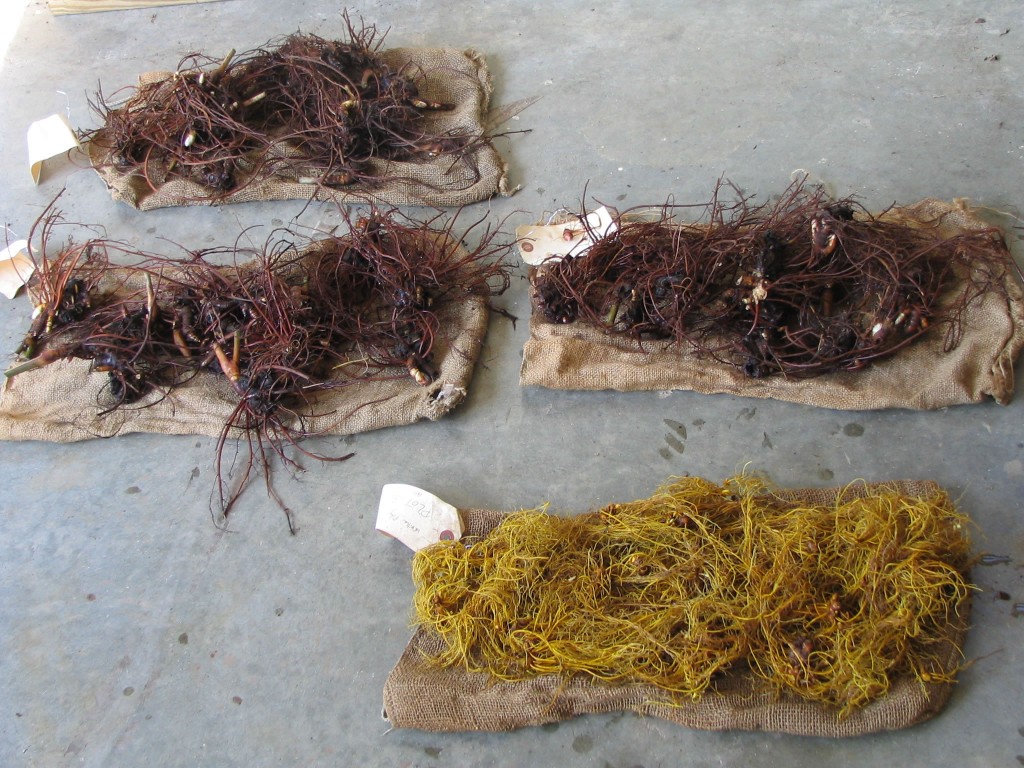GAPs for Medicinal Herbs (Good Agricultural Practices)
go.ncsu.edu/readext?435173
en Español / em Português
El inglés es el idioma de control de esta página. En la medida en que haya algún conflicto entre la traducción al inglés y la traducción, el inglés prevalece.
Al hacer clic en el enlace de traducción se activa un servicio de traducción gratuito para convertir la página al español. Al igual que con cualquier traducción por Internet, la conversión no es sensible al contexto y puede que no traduzca el texto en su significado original. NC State Extension no garantiza la exactitud del texto traducido. Por favor, tenga en cuenta que algunas aplicaciones y/o servicios pueden no funcionar como se espera cuando se traducen.
Português
Inglês é o idioma de controle desta página. Na medida que haja algum conflito entre o texto original em Inglês e a tradução, o Inglês prevalece.
Ao clicar no link de tradução, um serviço gratuito de tradução será ativado para converter a página para o Português. Como em qualquer tradução pela internet, a conversão não é sensivel ao contexto e pode não ocorrer a tradução para o significado orginal. O serviço de Extensão da Carolina do Norte (NC State Extension) não garante a exatidão do texto traduzido. Por favor, observe que algumas funções ou serviços podem não funcionar como esperado após a tradução.
English
English is the controlling language of this page. To the extent there is any conflict between the English text and the translation, English controls.
Clicking on the translation link activates a free translation service to convert the page to Spanish. As with any Internet translation, the conversion is not context-sensitive and may not translate the text to its original meaning. NC State Extension does not guarantee the accuracy of the translated text. Please note that some applications and/or services may not function as expected when translated.
Collapse ▲On April 18, 2015 we held a Good Agricultural Practices (GAPs) for Medicinal Herbs Training Session for Growers at the Mountain Horticultural Crops Research and Extension Center in Mills River, NC. The instructors in this four hour training included the (former) coordinator of the Blue Ridge Naturally Brand Project, Jennifer Flynn; Craig Mauney, an extension agent (now area specialized agent) who works with farmers on GAPs for fresh produce; Dr. Jeanine Davis, a university researcher/extension specialist and her research assistant, Margaret Bloomquist, research associate, who work closely with medicinal herb growers; and Ed Fletcher, a medicinal herb buyer. At the last minute we decided to videotape the event so others could benefit from the training. It is not a professional video, but all the information is there. The links to those videos on our YouTube channel are below.
Another excellent resource is the recently updated Good Agricultural and Collection Practices and Good Manufacturing Practices for Botanical Materials bulletin published by the American Herbal Products Association.
This event covered by these videos was part of the WNC Agriventures Project, a project funded by a federal Rural Jobs Accelerator grant with Land of Sky Regional Council, NC State University, AdvantageWest, the NC Natural Products Association, the Community Foundation of WNC, and the Small Business Technology and Development Center.
chevron_right
Videos of the 2015 GAPs for Medicinal Herbs Workshop
Part 1: Good Agricultural Practices (GAPs)
This video introduces you to the Blue Ridge Naturally Brand, provides an overview of the current Good Agricultural Practices (GAPs) for fresh produce and how it relates to medicinal herbs, and the beginning of the session on suggested GAPs for medicinal herbs.
Part 2: GAP Resources
(this video starts with a session already in progress and continues on the next video in the series. See Part 1 for the beginning of this session on suggested GAPs for medicinal herbs and Part 3 for the end). This video covers the existing resources available on GAPs for medicinal herbs, harvesting, and washing herbs.
Part 3: Drying and Packaging Herbs
(this video starts with a session already in progress. The session begins in Part 1 and continues into Part 2 of this series and ends in this video). This video covers drying and packaging herbs. It also contains the beginning of the session providing a buyer’s viewpoint on good agricultural practices.
Part 4: Buyer’s Perspective on GAPs
(this video starts about five minutes into a presentation on a buyer’s field based view of good agricultural practices. View Part 3 to see the very beginning of this session and Part 5 to see the end). A buyer’s perspective on GAPs for medicinal herbs.
Part 5: Conclusion
(this video starts with the end of a session on a buyer’s field based view of good agricultural practices. The session starts in Part 3, the bulk of the presentation is in Part 4, and the end is here). This video is the conclusion of the four-hour training session for medicinal herb farmers.
Jeanine Davis, NC Alternative Crops & Organics Program, Department of Horticultural Science, NC State University. Updated 8/18/2022.



